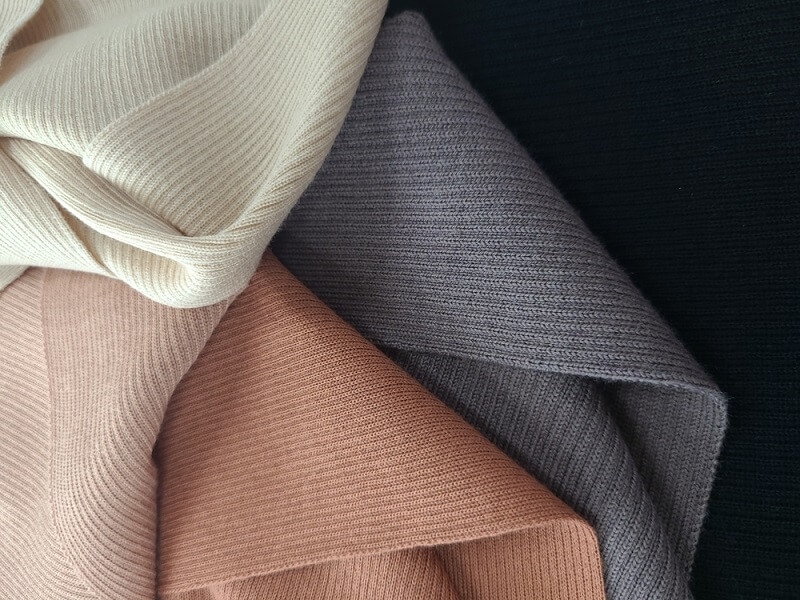
The right textiles can make all the difference between shivering through the cold and enjoying true cold-season comfort. This winter fabric guide will dive deep into the science behind warm materials, explain how insulated fabrics work, and show you how to use the right layering textiles to create cozy outfits that elevate both style and warmth. Understanding which fabrics protect you best during the first stretch of winter is important for both insulation and breathability in relation to long-term comfort.
Winter isn't about wearing heavier clothes; it's about intelligently selecting engineered textiles that lock in heat with no added bulk. From natural fibers that warm you up naturally to technical fabrics for extreme climates, this winter fabric guide breaks it all down for you to stay comfortable, stylish, and weather-ready.
The moment the temperature drops, your body loses heat faster than it generates it. That's where the right fabrics come in. Any cozy winter wardrobe can be traced back to the foundation provided by the materials that touch your skin and how effectively they regulate your warmth.
The wrong fabric will leave you chilly, sweaty, or restricted; the right one ensures cold-season comfort, breathability, moisture control, and reliable insulation all day.
Knowing the science of warm materials definitely gives you an edge. You know how to wear against the wind, low temperature, snow, and alter indoor-outdoor environments.
Warm fabrics are not all equal. Some have an inherent ability to trap heat, while others wick moisture and keep you protected from the weather. Here are the most dependable fabrics to opt for this winter:
When it comes to natural insulation, wool is still the best. Its fibers contain minute air pockets that trap body heat and keep you warm without adding any weight.
Merino wool, in particular, is considered for baselayers as it feels soft, can wick away moisture, and serves as a great layering textile in winter.
Fleece is a synthetic powerhouse known for amazingly cozy outfits. It emulates the warmth of wool but on a much lighter scale.
Benefits of fleece
Fleece is available in a variety of thicknesses to provide variable levels of warmth in winter conditions
Whether it's jackets, vests, or comforters, down is still arguably the best insulating fabric for staying warm.
Why Down Matters
If you want to be comfortable while traveling in cold weather, you are going to want down layers.
Cashmere provides great insulation while offering an elegant yet soft finish for everyday winter wear.
Advantages
Cashmere provides sophistication to cozy outfits as well as warmth.
Flannel is made of cotton, wool, or synthetic blends that are brushed for softness and warmth.
Why Flannel is Ideal
Flannel balances comfort with practicality, making it a favorite winter fabric guide recommendation.

All winter outerwear is not made entirely of natural fibers, as both tradition and technology have produced innovative fabrics designed for warmth and thermal insulation, which trap warm air against the outer cold.
Thinsulate
Thin strands of synthetically manufactured microfibers create warmth, trapping very little volume.
PrimaLoft
The insulation itself retains warmth when wet, making it ideal for snow and rain, and is often incorporated in performance garments.
Thermal Knit fabrics
These fabrics have a traditional waffle-hole texture that traps warm air close to the skin.
Contemporary insulated fabrics can provide the warmth of traditional fabrics while incorporating durability, mobility, and weather protection.
The secret to dressing in winter is to layer textiles on your body. Rather than a single bulky garment, it is better to wear layers for comfort and survival in any temperature range.
1. Base Layer (moisture management)
Your base layer should wick moisture away from your skin. Good examples are synthetic blends, Merino wool, and thermal cotton.
2. Mid Layer (Insulation)
This is where insulated fabrics shine. Fleece, wool sweaters, down vests, and thermal knits are significant sources of warmth.
3. Outer Layer (Protecting you from wind and rain).
For protection from the elements, you will want to wear either a windproof or waterproof shell (depending on the weather) made from nylon, polyester, or Gore-Tex.
When done right, layering textiles helps you create cozy outfits that are both functional and fashionable.
Designing cozy outfits isn't just about fashion, but about strategically pairing the right fabrics together to build warmth.
Office-Ready Warmth
Outdoor Errands
Lounge & Leisure
Each of the following combinations balances practicality with comfort in cold seasons: warm materials and insulated fabrics in all the right places.
Winter weather varies widely, and so should your winter fabric guide.
It's all about using the right mix of layering textiles to keep warm, without overheating.
Warm materials and insulated fabrics need proper care in order to maintain performance. General Care Tips:
Taking good care of your warm wear will keep it functional for years to come.
This winter fabric guide gives you the foundation for smarter winter dressing. Understanding how warm materials, insulated fabrics, and layering textiles interact means that you can actually build cozy outfits that truly deliver cold-season comfort. The right fabrics act as a barrier between you and harsh temperatures, keeping you relaxed, warm, stylish, and confident during the colder months. With an investment in quality textiles and a little know-how on layering, your winter wardrobe will see you protected through shifting climates, daily routines, and seasonal activities.
This content was created by AI